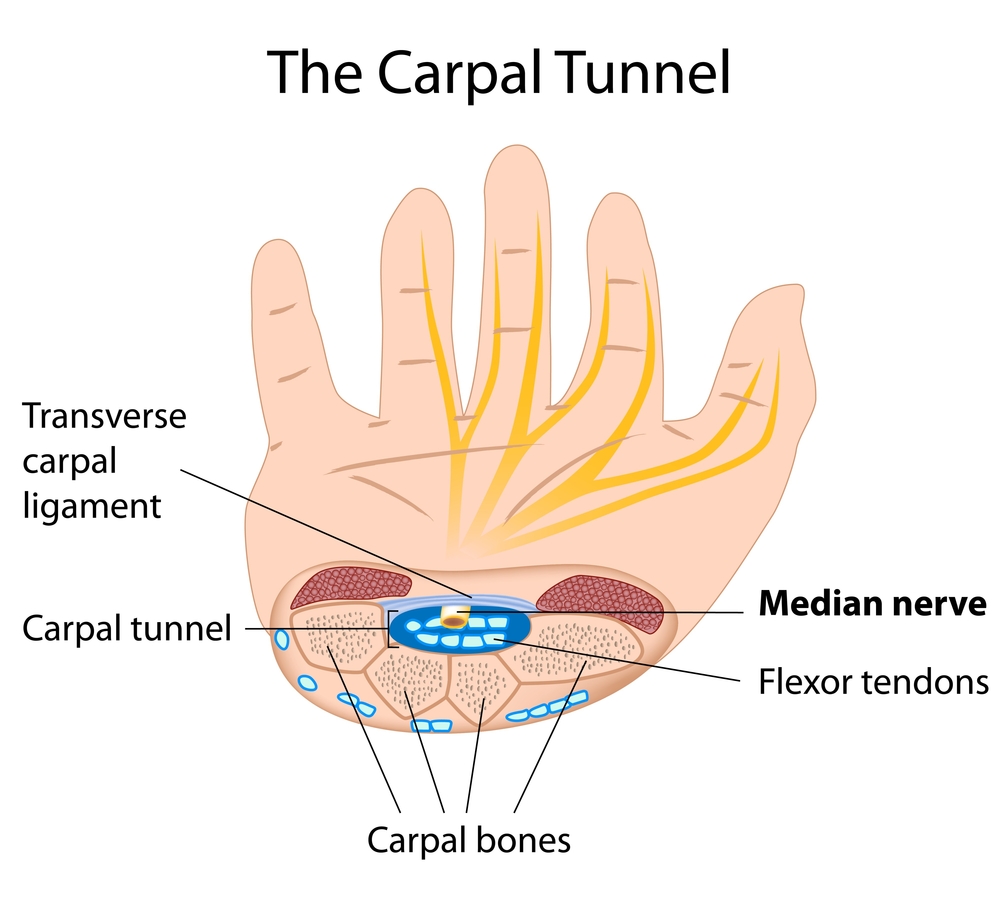Carpal Tunnel Syndrome

The American Academy of Orthopaedic Surgeons describes carpal tunnel syndrome as a condition that commonly causes pain, tingling and numbness in the arm and hand. This condition occurs when the median nerve, which provides feeling to the palm side of the thumb and to the index, middle, and some of the ring fingers, becomes compressed or squeezed at the wrist.
Symptoms of Carpal Tunnel Syndrome:
Symptoms typically start gradually, says The National Institute of Neurological Disorders and Stroke, “with frequent burning, tingling, or itching numbness in the palm of the hand and the fingers.”
Other Symptoms Include:
- Waking up feeling the need to “shake out” the hand or wrist
- Tingling feelings during the day
- Decreased grip strength
- Difficult to form a fist, grasp small objects, or perform other manual tasks
- Unable to tell between hot and cold by touch

Possible Underlying Medical Conditions
HealthLine states that the pain from carpal tunnel syndrome is due to an overload of pressure on the wrist and median nerve. This causes inflammation then leads to swelling. The most common cause of this is an underlying medical condition that causes swelling in the wrist. Some of the most frequent conditions linked with carpal tunnel syndrome are:
- Diabetes
- Thyroid dysfunction
- High blood pressure
- Autoimmune Disorders
- Fractures or trauma to the wrist
How Carpal Tunnel Syndrome is Diagnosed
Carpal tunnel syndrome is diagnosed through “tests that can measure the conduction speed of your nerve impulses. If the nerve impulse is slower than normal as the nerve passes into the hand, you may have carpal tunnel syndrome,” says HealthLine. There are nonsurgical treatment options such as wrist splints and steroid injections. However, surgery may be needed if there’s severe damage to your median nerve.
See a doctor if you think you have carpal tunnel syndrome. Doctors can diagnose it by using your medical history, a physical examination, and nerve conduction test.

